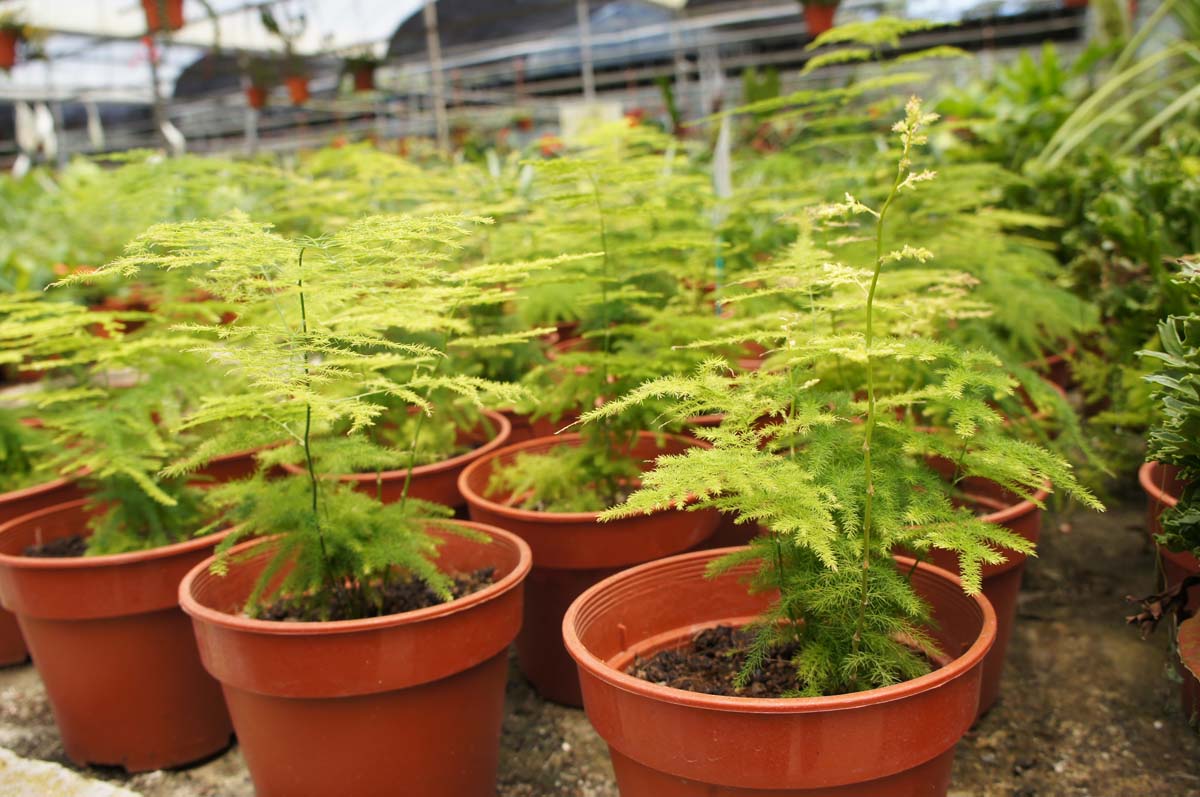Description
Asparagus
There are over 300 species of evergreen and deciduous perennials, climbers, and subshrubs, in this genus. They are from sandy and coastal sites in Europe, Asia and Africa. They produce arching, and spreading or climbing stems that hold scale like leaves and more prominent leaf-like stems which in some species have straight or curved spines. It bears slightly scented white or pink flowers borne singly or in racemes or small clusters are followed by red, orange, or purple berries ½” wide. The cold hardiness varies greatly between species and may need to be grown under glass. Foliage is used in floral arrangements and the Asparagus officinalis is edible.
When grown indoors grow in soil based potting mix in bright filtered light. Water freely from early spring to mid autumn and apply a balanced liquid fertilizer monthly. Water more sparingly in winter.
When grown out doors plant 12” apart from one another, in fertile moist but well drained soil in sheltered site in partial shade. Do not harvest the young shoots or spears until third spring. Divide in early spring.
Prone to Fusarium crown rot, Helminthosporium leaf spots, Cercospora leaf spots, rust, anthracnose, and canker occur. Slugs, spider mites and aphids may be problem.
Asparagus setaceus – Asparagus plumosus – Asparagus Fern – This bushy, later becoming a climber, from South Africa reaches 10’feet high. It produces feathery foliage, consisting of clusters of up to 20 bristle-like leaf like deep green stems, ½” long. In summer it bears solitary tiny, nodding, white flower from the leaf axils. Purple- black berries follow the flowers.
Zones 10-11





